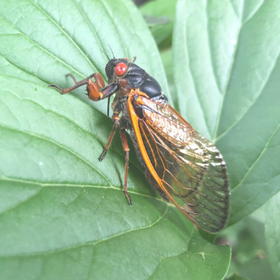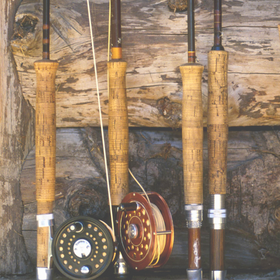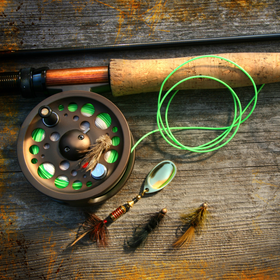 - This October Caddis is in the same family as most of the traveling sedges. (photo: www.troutnut.com)
- This October Caddis is in the same family as most of the traveling sedges. (photo: www.troutnut.com)
As far as most fly fishing amateur entomologists are concerned, caddis and sedge are one and the same. Yet without splitting too fine of a hair, sedge is normally reserved for a few special caddis, none more special than the traveling sedge. While the term ‘traveling sedge’ covers a few different hatches, that is a hair we’ll leave unsplit for now.
What the traveling sedge does is run across the water when emerging; the most famous of these emerge on the lakes of British Columbia. But that same species (or a close enough relative) lives in many lakes across the Northern US and Canada.
 - The Goddard Caddis is a great traveling sedge pattern! High floating and durable, it will bring those fish to the surface
- The Goddard Caddis is a great traveling sedge pattern! High floating and durable, it will bring those fish to the surface
The rough average of these hatches is Mid-June to Mid-July but can vary up to a month on each side, and run into October in some places. About two weeks before emerging pupae reach the surface they emerge from the substrate and make themselves available for patient, hungry trout. Once the pupae reach the surface, their vulnerability is at its highest. It can take quite some time to escape it's shuck, and during that pause, many of these caddis fall victim to trout. But soon, it begins a weird journey towards the shore that makes it look like it is drunkenly running across an ice rink. When you are in one of these hatches, you will see the bugs moving, and you can start to work on a retrieve that imitates their movements.
 - Tom Thumb is the most famous traveling sedge pattern. Plus it works great after its been chewed up and the deer hair starts to flare out!
- Tom Thumb is the most famous traveling sedge pattern. Plus it works great after its been chewed up and the deer hair starts to flare out!
While you wait each day for the hatch to start, try to fish pupa patterns until it begins. You can also try to sink your dry patterns for that matter. Takes are usually vicious, head snapping matters, so make sure your tippet can handle the initial stress and keep your hand light, hard to do in the initial stages of the hatch to be sure!




